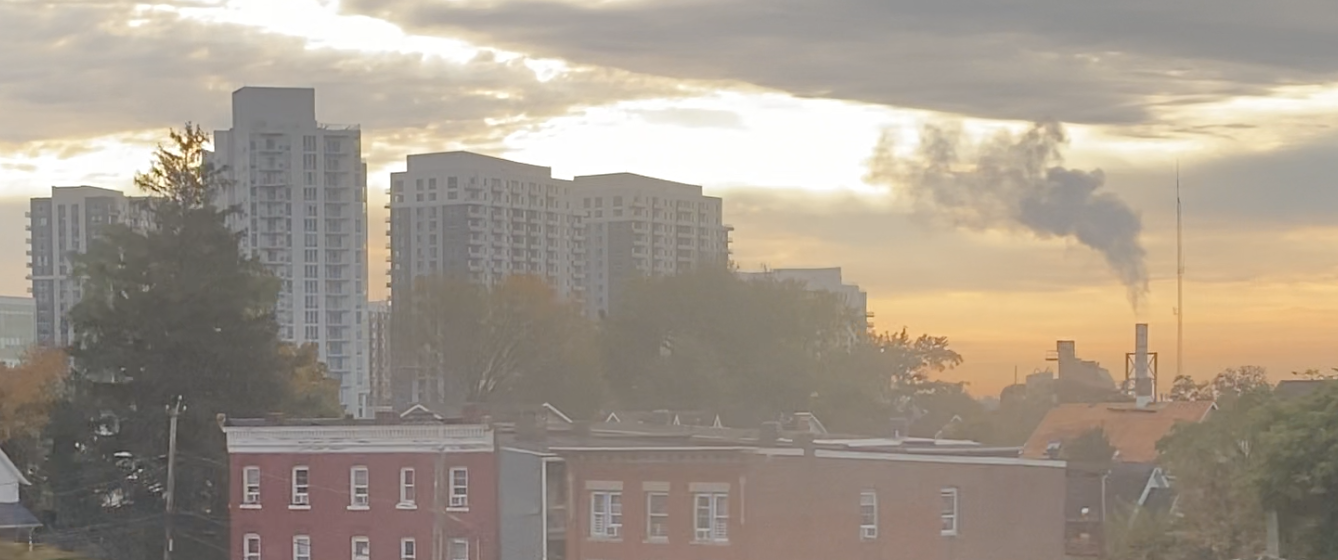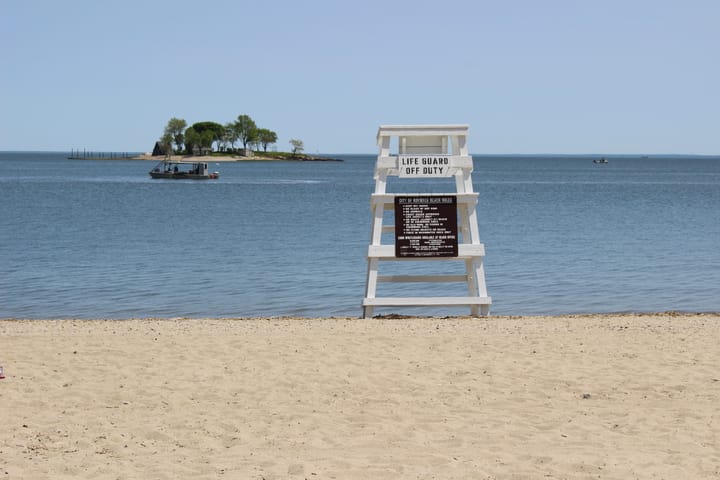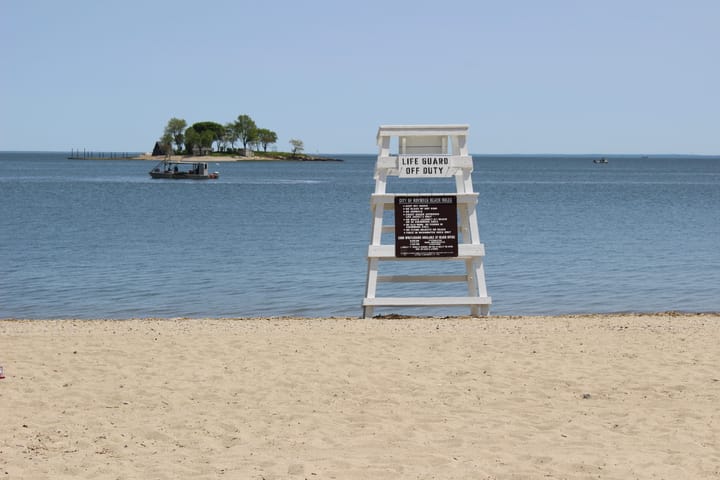Trouble in the Air: Southwest Connecticut Deals with Poor Air Quality
Fairfield County’s air quality is some of the worst in the country, according to a 2023 “State of the Air” report from the American Lung Association.

This past summer, as wildfire smoke from Canada moved into our region, many saw firsthand the impacts of unhealthy air quality and the effects it can have. But outdoor air quality in our area remains a persistent challenge, even outside of the wildfire smoke.
Fairfield County’s air quality is some of the worst in the country, according to the 2023 “State of the Air” report from the American Lung Association. The county received poor grades for both ozone—a harmful pollutant—and particle pollution, both of which can cause health challenges, such as higher rates of asthma.
The report found that Fairfield County was the “most polluted county” in the tristate area. The county did have fewer unhealthy days compared to 2022’s report, but still remained the most polluted. It also saw the most unhealthy air days in the region for particle pollution, which causes short-term spikes in poor air quality.
Air pollution remains a particular challenge for our region, due to a variety of factors, including traffic emissions from I-95 and the Merritt Parkway, leftover contamination from historic industrial uses, and weather patterns which concentrate pollution in the area.
The State of the Air report noted that Fairfield County’s “consistent F grade is largely because of ozone and ozone precursors that blow in from elsewhere and remain concentrated near ground level by local atmospheric conditions.”
“Even one poor air quality day is one too many for our residents at highest risk, such as children, older adults, pregnant people and those living with chronic disease,” Ruth Canovi, Director of Advocacy for the Lung Association in Connecticut said in a statement. “That’s why we are calling on Governor Lamont and the state legislature to continue moving forward on policies to ensure that everyone has clean air to breathe.”
Unequal Impacts
The State of the Air report also found that—both locally and across the country—the negative impacts of air pollution are much more likely to be felt by minority communities.
“Out of the nearly 120 million people who live in areas with unhealthy air quality…more than 64 million (54%) are people of color. In fact, people of color were 64% more likely than white people to live in a county with a failing grade for at least one measure, and 3.7 times as likely to live in a county with a failing grade for all three measures,” according to the report.
Stamford officials have also found these disparities on a local level.
“Historically, toxic industries and traffic pollution have disproportionately impacted Stamford’s South End and West Side,” the city stated in a grant application to the Environmental Protection Agency for air quality monitors. “Poor air quality is a systemic issue that people of color face. There is a strong link in the South End and West Side neighborhoods between poverty and chronic disease, deteriorating residents’ quality of life. These areas exhibit some of the worst asthma rates in the community.”
The city found that the residents from the South End and West Side neighborhoods had between 108.5 and 142.5 documented asthma cases per 10,000 people, compared to just 15.1 asthma cases per 10,000 people in North Stamford.
“The areas also experience high rates of chronic heart/lung disease and have a low life expectancy—78.1 years compared to 86.1 in North Stamford,” the application stated.
Air Quality Monitoring Efforts
Because of this, the state and communities around our region are working to improve their tracking of air quality to help keep residents informed about the current conditions.
Connecticut’s Department of Energy and Environmental Protection is “developing a network of PurpleAir sensors to measure fine particulate matter.”
Stamford has taken part in this program, installing the monitors “throughout the city based on the State Department of Public Health’s map of areas with high asthma rates,” according to DEEP. The data is available on the city’s website, allowing residents to gain real-time information about the air quality.
Earlier this year in Greenwich, Caroline Baisley, the town’s director of health, told the Board of Health that the state has deployed a “mobile air quality monitoring vehicle which is equipped with air pollution analyzers,” in the county to help “ensure that on a community-based level, pollutant emissions and the air people breathe in their communities are meeting state standards.”
Stamford also recently accepted a $68,000 grant from the federal Environmental Protection Agency for a 31-month air quality monitoring program that will install three monitors in the South End and West Side neighborhoods with a focus on tracking NO2, particulate matter, and ozone levels.
But many members of the Stamford Board of Representatives want the city to do more.
Representative Virgil de la Cruz has been advocating for a long-term air quality monitoring program in the city for years.
“This item came to life back in 2020 when the mold crisis exploded into the scene and we became aware that [parts of the city] had asthma rates off the charts,” de la Cruz told the Board of Representatives’ Public Safety and Health Committee in September. “The subject is complex enough that it requires some forethought and a plan.”
De la Cruz said that the board first started addressing this issue in September 2020 and it's been “four years and nothing has been done to put a plan in writing.”
He emphasized that a plan would help identify “pollutants of concern,” areas that are most impacted, and the equipment needed to track these. At the Public Safety and Health Committee’s last meeting, de la Cruz said that the city’s director of administration and grants officer are “ready to proceed looking for grant money” to help support air quality efforts.
“However before they can determine how much money to apply for, they need some estimate of how much money is needed,” he said. “It is not possible to come up with an estimate without outlining a plan.”
Lou DeRubeis, Stamford’s director of public health and safety, said that this issue is a top priority for Mayor Caroline Simmons—both in the short-term through the purple air quality monitors and the EPA grant and through creating a long-term monitoring plan.
“The mayor is very committed to this issue, the entire administration is very committed to this issue and we do have a meeting scheduled next week to discuss our long-term strategy and planning in regards to air quality monitoring for the city,” he told the committee. “We do have DEEP coming in to consult with us in regards to putting together a long-term plan for the city’s air monitoring program.”
Representatives urged DeRubeis and the rest of the administration to move as quickly as possible, and see what can be done quickly. For example, Representative James Grunberger highlighted how trees could be used to help address some negative impacts of air pollution.
“Trees are a very quick, instant fix if you put them close enough—trees along the major roads, trees on the East Side, West Side, South End, Waterside,” he said, adding that “at some point, I’d like to get started with something.”
Other communities, like Norwalk, have also emphasized the importance of tree planting related to air pollution.
“Pollution-related illnesses, which include upper and lower respiratory symptoms, bronchial asthma, lung function deficits, and air pollution related cancers, are more prevalent in urban areas,” according to a tree canopy report from the Western Connecticut Council of Governments. “Trees improve urban air quality by removing these harmful pollutants from the air and preventing the formation of compounds. Trees remove air pollution in two ways, through uptake and interception.”
Canovi said that the American Lung Association is calling on communities to do this kind of work to address air pollution, specifically asking states to adopt and enact policies that help them “meet our greenhouse gas emissions goals and strengthen our environmental justice laws to help everyone breathe healthier air.”



